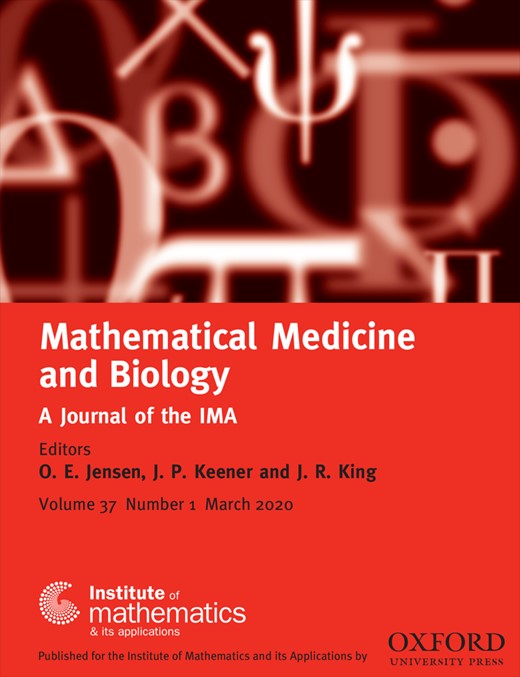-
Views
-
Cite
Cite
Rebecca J Shipley, Amy F Smith, Paul W Sweeney, Axel R Pries, Timothy W Secomb, A hybrid discrete–continuum approach for modelling microcirculatory blood flow, Mathematical Medicine and Biology: A Journal of the IMA, Volume 37, Issue 1, March 2020, Pages 40–57, https://doi.org/10.1093/imammb/dqz006
Close - Share Icon Share
Abstract
In recent years, biological imaging techniques have advanced significantly and it is now possible to digitally reconstruct microvascular network structures in detail, identifying the smallest capillaries at sub-micron resolution and generating large 3D structural data sets of size >106 vessel segments. However, this relies on ex vivo imaging; corresponding in vivo measures of microvascular structure and flow are limited to larger branching vessels and are not achievable in three dimensions for the smallest vessels. This suggests the use of computational modelling to combine in vivo measures of branching vessel architecture and flows with ex vivo data on complete microvascular structures to predict effective flow and pressures distributions. In this paper, a hybrid discrete–continuum model to predict microcirculatory blood flow based on structural information is developed and compared with existing models for flow and pressure in individual vessels. A continuum-based Darcy model for transport in the capillary bed is coupled via point sources of flux to flows in individual arteriolar vessels, which are described explicitly using Poiseuille’s law. The venular drainage is represented as a spatially uniform flow sink. The resulting discrete–continuum framework is parameterized using structural data from the capillary network and compared with a fully discrete flow and pressure solution in three networks derived from observations of the rat mesentery. The discrete–continuum approach is feasible and effective, providing a promising tool for extracting functional transport properties in situations where vascular branching structures are well defined.





